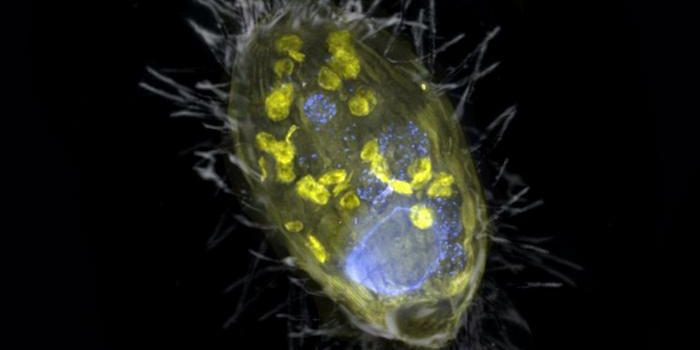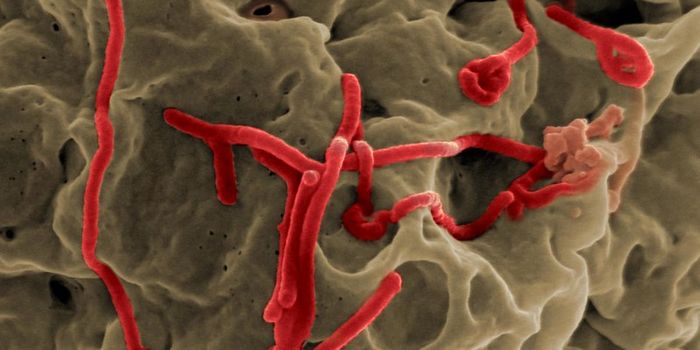RSV & Influenza Can Combine to Form a New, Hybrid Virus
While different strains of influenza virus can co-infect cells and form hybrid flus, virus co-infections have tended to be rare. The pathogens often outcompete one another so that one can gain supremacy and get the resources it needs from its host. Last winter, some simultaneous cases of influenza and COVID-19 were observed, particularly in Brazil. The co-infection was dubbed flurona, and did not result in the production of any new type of virus. But researchers studying influenza and RSV (respiratory synctial virus) have now found that when both RSV and influenza viruses infect the same cell, they can fuse into an entirely new viral pathogen. The different, distinct components of the hybrid virus can even be seen in the microscope like a weird palm tree, with influenza A virus 'leaves' at the end of an RSV 'trunk.' The findings have been reported in Nature Microbiology.
“Respiratory viruses exist as part of a community of many viruses that all target the same region of the body, like an ecological niche,” first study author Dr. Joanne Haney of the MRC-University of Glasgow centre for virus research, told The Guardian. “We need to understand how these infections occur within the context of one another to gain a fuller picture of the biology of each individual virus.”
“This kind of hybrid virus has never been described before,” added corresponding study author Professor Pablo Murcia of the University of Glasgow. “We are talking about viruses from two completely different families combining together with the genomes and the external proteins of both viruses. It is a new type of virus pathogen.”
When the two viruses came together, the hybrid seemed to be able to infect more types of cells, and was better at infecting a higher proportion of them. The hybrid virus was able to move into cells that did not have influenza A receptors. It may be possible for the hybrid virus to move further into the respiratory system by infecting more cell types, which could potentially lead to a more severe infection or outcome.
The researchers also found that particles of influenza A virus could evade immunity by displaying antigens from RSV surface proteins.
RSV did not benefit from the formation of the hybrid. When influenza A was present, there was significantly less viral replication of RSV.
However, all of these findings were based on data collected from cells that were growing in culture. More research will be needed, and potentially, clinical studies of patients, to determined whether this is happening in people and how they would be affected if a hybrid virus formed.
Unfortunately, scientists may get a chance to study a flu and RSV co-infection, with both viruses circulating widely at this time.
Experts, such as Dr. Stephen Griffin, a virologist at the University of Leeds, have noted that this research provides even more evidence that we should take preventive measures to avoid being infected with any virus, or more than one virus at once.
Sources: The Guardian, Nature Microbiology









